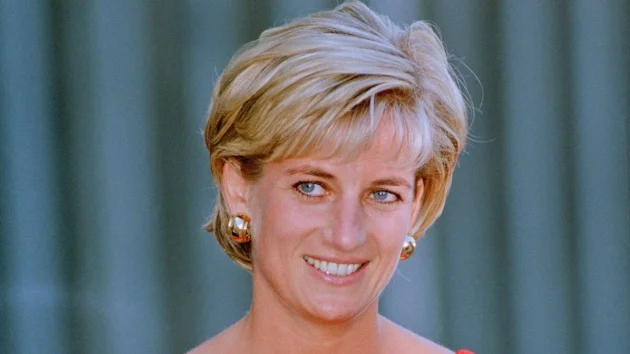(LONDON) — A time capsule that was laid by Princess Diana in 1991 at Great Ormond Street Hospital (GOSH) in London has been opened, with officials revealing a collection of 1990s artifacts just days before the 28th anniversary of her death on August 31st, 1997.
Jason Dawson, the hospital’s executive director who opened the capsule earlier this year as GOSH started its new project to develop a new children’s cancer center, called the moment “really quite moving, almost like connecting with memories planted by a generation gone by.”
Inside lay a snapshot of 1991 — a Kylie Minogue CD, Casio pocket television, solar calculator and other artifacts that were cutting-edge three decades ago.
As winners of a BBC competition 34 years ago, the items were chosen by David Watson, a then-11-year-old boy from Devon, and Sylvia Foulkes, a then-9-year-old girl from Norwich, to represent life in the 1990s.
Watson contributed the Kylie Minogue “Rhythm of Love” album and a European passport, along with a pocket TV and recycled paper.
Foulkes added British coins, tree seeds from Kew Gardens in London, a hologram snowflake and a solar calculator. Princess Diana included her own photograph and a copy of The Times newspaper that featured Gulf War headlines at the time.
As Great Ormond Street Hospital’s president from 1989 until her death, Diana played a central role in GOSH’s Wishing Well Appeal, raising £54 million — equivalent to £200 million today – considered the largest U.K. charity appeal at the time, according to GOSH.
Princess Diana famously made regular ward visits, sitting on children’s beds, holding hands and providing physical comfort at a time when many feared contact with seriously ill patients.
After her divorce in 1996, Diana reduced her charitable commitments from over 100 organizations to just six focused causes, with Great Ormond Street Hospital being one of the remaining ones.
Stephen Lee, director of the U.K. Institute of Charity Fundraising Managers, called her impact “probably more significant than any other person’s in the 20th century.”
Modern royal philanthropy directly traces to Diana’s deeply personal approach, living on through Prince William’s homelessness work and Harry’s veteran advocacy, according to Emma Hart, director of the McNeil Center for Early American Studies at the University of Pennsylvania, who notes that notes Diana “forced the British monarchy to move into the 21st century” and that she “showed how the royal family could be a force for good.”
Meanwhile, following the opening of the capsule and the continuation of construction of the new cancer center, officials say that the new facility aims to increase patient capacity by 20% when it opens in 2028.
“Replacing outdated facilities on Great Ormond Street itself, the centre will be a national resource for the treatment of childhood cancers, with a focus on research and innovation,” GOSH said in a statement following the announcement of the time capsule being opened. “Developed with families and clinicians, the centre’s design will make it easier for clinical teams to develop kinder, more effective treatments, all delivered in a child-focused environment where children can play, learn and be with their family while at hospital.”
Copyright © 2025, ABC Audio. All rights reserved.

















